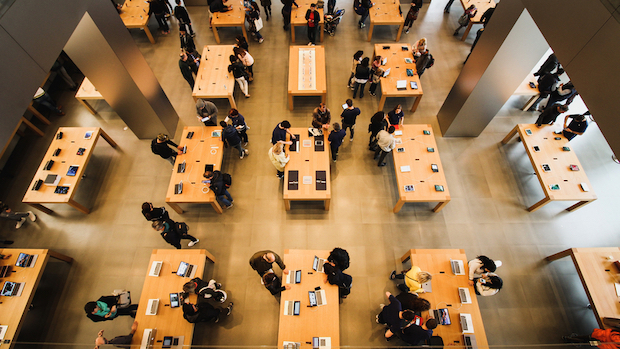You can feel their presence. They traverse the office like zombies moaning “praise … praise” as they glance from hand-held screens into corner suites with hungry eyes. Here today. Gone tomorrow. They crave authenticity and smell lip service a mile away because they have an app for it.
Meet the Millennial. Or the familiar archetype associated with the generation born between 1980 and 1995, according to Environics’s 2017 Canadian Millennials Social Values Study. This group makes up more than a quarter of the Canadian population. If you haven’t noticed them, you will … because they’re here to stay.
In 2016, Statistics Canada found that 36 per cent of Canada’s workforce was over the age of 55—the highest proportion on record. As the public service braces for a wave of retirements in 2020, its longevity will depend on Millennials.
So how does a hiring manager secure top talent from Canada’s most educated talent pool? By understanding that Millennials, like anyone else, value public service features like job mobility, meaningful work, and work-life balance. Hiring managers can leverage this knowledge when they meet prospective hires by offering them greater flexibility in when they work, where they work, and how they contribute.
The 2018 Deloitte Millennial Survey revealed that, “… highly flexible working arrangements enhance degrees of employee loyalty. Not only do Millennials appreciate not being tied to strict hours or locations, they also value the trust their employers demonstrate in granting that flexibility. This may seem counterintuitive to risk-averse public service managers, but studies show that workers respond positively when given the freedom to achieve clearly defined deliverables how they see fit—a balance between managerial oversight and staff autonomy.
Among Millennials who intend to stay with their current employer for at least five years, 55 per cent say there is more flexibility now as compared to three years ago.”
Many private sector employers even consider work-life balance when they design work spaces. They think beyond open concept, a trend that Harvard researchers say has ironically contributed to 70 per cent less face time.
Deloitteavoids this issue in Toronto with, “… 18 different types of workspaces to allow employees to match their work environment to the task at hand, as well as dedicated areas for client use, and a wellness centre focused on physical and mental wellbeing.” By encouraging agilework spaces, Deloitte has given its employees the power of choice. A six-floor open staircase also stresses social interaction rather than hierarchy—something that crowdfunding, ridesharing Millennials increasingly dismiss.
The Public Service of Canada acknowledges this change in Blueprint 2020, a plan to drive change and spur innovation. But when it comes to implementing these changes, getting back to basics offers the largest incentive for Canada’s youngest public servants.
Driver’s Ed. for motivating Millennials
The Four-Drive Theory of Motivation describes the main motivators for employees:
- Drive A: acquire and achieve;
- Drive B: bond and belong;
- Drive C: be challenged and comprehend; and
- Drive D: define and defend.
Organizational research shows that Millennials want to satisfy all four drives in the workplace. Public managers must take this into consideration when implementing change.
Millennials need to know that they are valued and that employers will invest in them and give them opportunities to grow. These are the hallmarks of Drives B and C, tangibly reinforced in the public service through organizational structure and culture.
Generation Y (born 1980-1994) doesn’t want to sit back and quietly pay their dues when they have good ideas to contribute now. Right now.
Think globally, act locally
Since Millennials will make up 35 per cent of the global workforce by 2020, public service leaders are going to need Generation Y to thrive in a global economy.
Fortunately, the key to Millennial retention transcends borders. It’s simply about management supporting the four drives that motivate employees and, by extension, offering more flexibility that shifts organizational culture. Organizations that do this will attract future thought leaders while ensuring that the brightest young minds stay in the public service once they get there.

